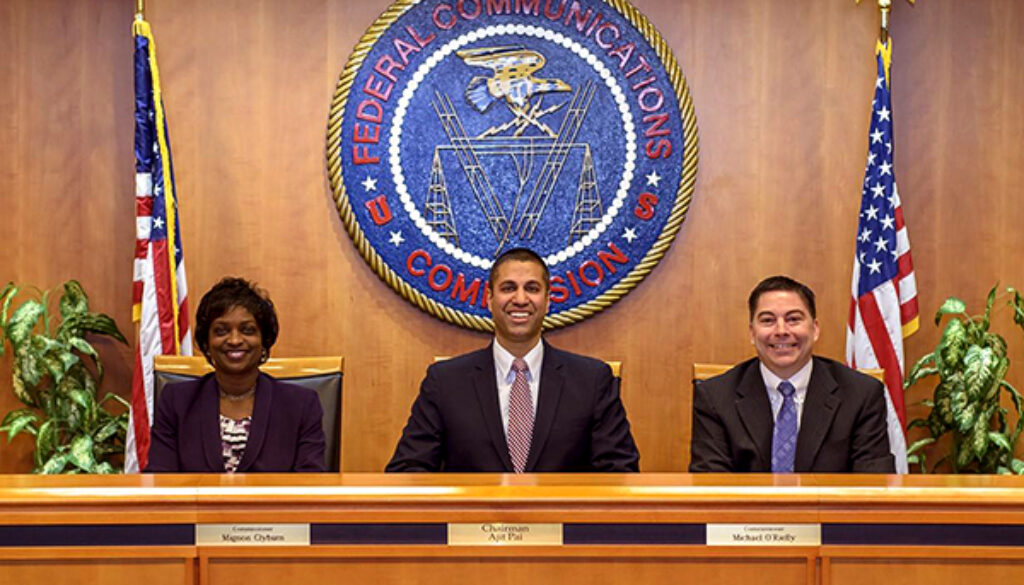The FCC’s net neutrality rules are officially repealed today. Here’s what that really means.
Monday marks the official end of the federal government\’s net neutrality rules, the Obama-era regulations that said Internet providers can\’t block or slow down websites or prioritize their content over others\’. It\’s a turning point for Internet policy and the Web as a whole, as broadband providers will enjoy additional freedom to seek new ways of making money in a rapidly changing market. With the rules coming off the books, how is your Internet experience likely to change? Here\’s what you need to know.
What\’s net neutrality, again?
Net neutrality is an idea about equal access to Internet content. Under its principles, Internet providers shouldn\’t interfere with your ability to reach the websites, apps or services of your choice. If you\’re a fan of Netflix, for example, net neutrality holds that you should be able to watch its shows without running into impediments your ISP, or Internet service provider, puts up that are designed to push you toward a competing service, such as Hulu.
Many supporters of net neutrality also interpret the concept to mean that broadband companies shouldn\’t offer online companies \”fast lanes,\” or faster delivery to Internet users\’ devices, particularly if it involves extra fees the websites must pay for the special treatment. That tactic, which experts call \”paid prioritization,\” runs the risk of creating an uneven playing field where big, dominant Internet companies can afford the fast lanes while start-ups or small businesses get left behind, net neutrality activists say.
[Goodbye to net neutrality. Hello to an even-bigger AT&T?]
What were the net neutrality rules?
In 2015, the Federal Communications Commission sought to codify these principles into formalized regulations. Led by its then-Democratic chairman, Tom Wheeler, the FCC approved rules that banned the blocking and slowing of Web content by Internet providers. A third rule banned the practice of paid prioritization, and a fourth provision, a \”general conduct\” standard, gave the FCC the ability to investigate broadband practices it believed could be problematic.
Why are the rules going away?
Last December, the FCC under Republican Chairman Ajit Pai voted to roll back the rules. Pai, who had been a commissioner when the rules were approved, is a longtime critic of the policy. He has argued that the regulations are too restrictive on businesses and discourage them from investing in network upgrades that could make your Internet service faster and better. Although the vote occurred months ago, it took time for the results to take effect. That\’s why the rules are only expiring now.
What\’s the impact of the repeal?
The end of the bans on blocking, slowing and paid prioritization means your Internet providers will be free to engage in that activity without legal repercussions, so long as they disclose it to the public on their own websites or to the FCC.
The blocking and slowing of websites gets much of the attention in the net neutrality debate. But what\’s more likely to occur are subtle changes to your Internet experience that you may or may not notice. It\’s hard to say what specific changes you might experience; part of the whole point of undoing the net neutrality rules is that Internet providers will begin to experiment with business models we haven\’t seen before. One danger, according to consumer advocates, is that those new models could end up making it harder to discover innovative new services. Under this theory, you won\’t know what you\’re missing. But here are a few tactics that have been tried before that have drawn scrutiny under the old net neutrality rules.
Yes, finally! What\’s an example?
One is the offering of discounts on Internet service in exchange for letting your broadband provider mine your browsing history and other personal information.
Another might be getting unlimited wireless access to a mobile app that your Internet provider owns, while usage of other apps continues to count against your monthly data cap.
Isn\’t Congress trying to reverse the repeal?
Some members of Congress are trying to push through a resolution that, if successful, would overturn the FCC\’s repeal vote. The measure aims to restore the agency\’s net neutrality rules as if the repeal had never happened. It has already passed the Senate.
What are its chances in the House?
It\’s unclear. The House\’s Republican leadership has signaled its disinterest in putting the resolution to a vote. Supporters of the resolution could overcome that with a discharge petition that forces a floor vote on the resolution, but the petition still lacks the 218 necessary votes to proceed.
If the resolution gets a vote in the House, it may not succeed. Even if it succeeds, President Trump is not expected to sign it. That said, some supporters of the resolution say it could play a role in driving voters to the polls in this year\’s midterm elections.
What else can we expect?
More than 20 states have sued the FCC to stop the repeal. A federal appeals court in Washington is expected to hear that case in the coming months. We\’re also waiting to hear whether the Supreme Court will agree to hear a separate lawsuit on net neutrality.
A number of states have tried to get around the FCC\’s repeal either by developing legislation laying out their own net neutrality rules or by issuing gubernatorial executive orders that limit which Internet providers can do business with the state. If the only providers that can serve state governments are those that observe net neutrality, these states reason, then it could shape what services consumers are offered, too.
But both of these approaches are expected to lead to court challenges by the FCC, whose new policy on net neutrality contains explicit language that tries to preempt states from doing exactly what the legislation and executive orders are meant to do. The agency hasn\’t yet filed any lawsuits, though.
Source – Brian Fung – The Washington Post – Click Here to Navigate To Article

